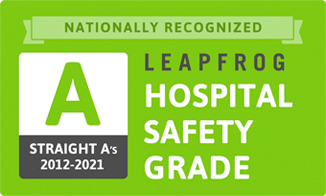Breast Augmentation
Breast enlargement, or augmentation mammaplasty is a surgical procedure to enlarge the breasts using breast implants filled with saline or silicone.
Request a Consultation See Before & After Gallery

Who Should Consider a Breast Augmentation?
Breast augmentation is for individuals who want to:
- Enhance the size, shape and fullness of their breasts
- Restore breast volume lost due to weight loss, aging, pregnancy or breastfeeding
- Correct existing asymmetry
- Define their body proportions
7 Reasons to Choose Straub Benioff Medical Center Plastic Surgery for Your Breast Augmentation
- 1You want to achieve a natural, well-balanced appearance.
We understand that the results matter over time and will help you select an appropriate and safely sized implant that is complementary to your body type. - 2We have Hawaii’s Top Doctors.
Dr. David Cho and Dr. Robert Schulz are both board-certified in plastic and reconstructive surgery and have been repeatedly recognized as two of Hawaii’s Top Doctors by Castle Connolly. - 3We’re experienced with both cosmetic and reconstructive breast surgery.
Experienced with some of Hawaii’s most challenging reconstructive cases, we have amazing insights to enhance complex cosmetics cases. - 4We have high quality breast implants.
Entrusted with some of Hawaii’s most-challenging reconstructive cases, we have amazing insights to enhance complex cosmetics cases. - 5We have the latest information, so you’ll be well-informed.
With access to up-to-date information on breast implant safety, our team will spend the time with you to provide honest education about the responsibilities of having an implant in the body and answer any questions. - 6We have a proven track record for long-term safety, reducing the risk of tightening around the breast implant.
We have a proven track record for long-term safety, reducing the risk of tightening around the breast implant. - 7We use general anesthesia.
Breast augmentations at Straub Benioff Medical Center use general anesthesia, which means you’ll sleep through the procedure so there’s no discomfort.
Are You Ready to Enhance Your Appearance?
Do You Have Questions?
Request a ConsultationSee Before & After Gallery





Breast Augmentation Before & After Gallery
Warning: Gallery content may not be appropriate to view in all settings
Testimonials from Breast Augmentation Patients
Request a Consultation for Breast Augmentation Procedures
Breast Augmentation FAQs
-
Am I a good candidate for breast enlargement?
The best candidates for breast augmentation are women who are looking for improvement in their appearance and who are physically healthy and realistic in their expectations.
-
How is the surgery performed?
The method of inserting and positioning your implant will depend on your anatomy and your surgeon's recommendation. You'll want to discuss the pros and cons with your doctor before surgery to make sure you fully understand the implications of the procedure recommended for you.
Breast implant placement: Working through an incision, the surgeon will lift your breast tissue and skin to create a pocket, either directly behind the breast tissue or underneath your chest wall muscle (the pectoral muscle). The implants are then centered beneath your nipples.
Behind the breast tissue vs. behind the chest muscle placement: Some surgeons believe that putting the implants behind your chest muscle may reduce the potential for capsular contracture, a condition that occurs when the scar tissue naturally forming around the breast implant tightens and becomes unusually hard. This placement may also interfere less with breast examination by mammogram than if the implant is placed directly behind the breast tissue. Placement behind the muscle, however, may be more painful for a few days after surgery than placement directly under the breast tissue.
Completing the surgery: The surgery usually takes one to two hours to complete. Every patient is different; your doctor will discuss the details of your specific surgical plan.
-
What materials are the breast implants made of?
A breast implant is a silicone shell filled with either silicone gel or a salt-water solution known as saline.
-
Will I need anesthesia?
At Straub Benioff Medical Center, breast augmentation is performed with a general anesthesia, so you'll sleep through the entire operation.
Other surgeons may use a local anesthesia, combined with a sedative to make you drowsy. In those cases, you'll be relaxed but awake, and may feel some discomfort.
-
Will the breast implant surgery result in permanent scarring?
Breast augmentation does cause some scarring, but every effort will be made to place the incisions so that resulting scars will be as inconspicuous as possible.
Initially, scars will be firm and pink for at least six weeks. After that, they may remain the same size or may even appear to widen.
Scars will begin to fade after several months, although they will never disappear completely.
-
How long does the breast implant procedure take?
A typical breast augmentation procedure will take one to two hours.
-
What can I expect before the procedure?
Initial consultation: Your surgeon will evaluate your health and explain which surgical techniques are most appropriate for you, based on the condition of your breasts and skin tone. If your breasts are sagging, your surgeon may also recommend a breast lift. Be sure to tell your surgeon if you smoke and if you're taking any medications, vitamins or other drugs.
You may want to ask for a copy of the manufacturer's insert that comes with the implant your surgeon will use, so you have all the details.
Preparing for surgery: Your surgeon will give you instructions to prepare for surgery. This will include guidelines for the following:
- Eating and drinking
- Smoking
- Taking or avoiding certain vitamins and medications
-
Will I be able to drive home after surgery?
No, you should not drive yourself home after surgery. Be sure to arrange for someone to drive you home and to help you out for a few days following surgery, if needed.
-
How long is the recovery time for breast implants?
Week 1: Arrange for someone to drive you home after your surgery and to help you for a few days, if needed. You should be able to return to work within a few days, depending on the level of activity required for your job.
Weeks 2-3: Your breasts will probably be sensitive to direct stimulation for two to three weeks, so you should avoid much physical contact during this time.
Weeks 3-4 and beyond: Breast contact is fine once your breasts are no longer sore, which is usually three to four weeks after surgery.
-
What can I expect after the procedure?
Rest as much as possible when you return home.
- Stay in bed at all times except for eating meals and when you need to use the bathroom.
- Keep your head and chest elevated on at least two to three pillows at all times.
- Sleep on your back rather than your side. Sleeping on your side will cause you to become more swollen on that side.
- Activity may be increased gradually after a few days. Most women can resume normal activities within the first week after surgery.
Dizziness:
- It is normal to feel drowsy or sluggish the entire day.
- You may feel dizzy or unsteady when standing or walking, so make sure you have someone or something to support you nearby.
Medication:
- Take pain medication as needed and as directed. *DO NOT take pain medication on an empty stomach. Avoid alcoholic beverages.
After care:
- Wear the ACE wrap as instructed and keep it on until your next follow-up appointment.
- Monitor any drainage you may have.
Exercise and heavy physical exertion:
- Avoid high-impact exercises for one month.
- Refrain from engaging in physically demanding activities, such as tennis, swimming or golfing, for approximately two to three weeks after surgery.
Driving:
- You can drive within four to five days. Most women return to normal work activities by the seventh to tenth day after surgery.
Smoking:
- DO NOT smoke for one to two weeks after surgery.
Follow-up appointments:
- You will see your surgeon the day following surgery. If drainage tubes are present, they will most likely be removed at this visit.
- A few days after surgery, the dressing will be removed and you will usually be placed into a brassiere.
- Sutures are removed within a few days.
-
Do breast implants interfere with mammograms?
Current breast implants do partially block X-rays that are used in mammograms, but most radiologists feel that, with extra views, they can see most of the breast tissue adequately.
There are no studies to date documenting a case in which a breast implant caused cancer to be hidden. Still, there is at least a possible risk of a delay in diagnosis.
It is recommended that a mammogram be done in women older than age 35 who desire breast implants to establish a baseline. Routine mammograms should be continued after breast augmentation for women who are in the appropriate age group.
There continues to be research on developing implants that do not obscure X-rays.